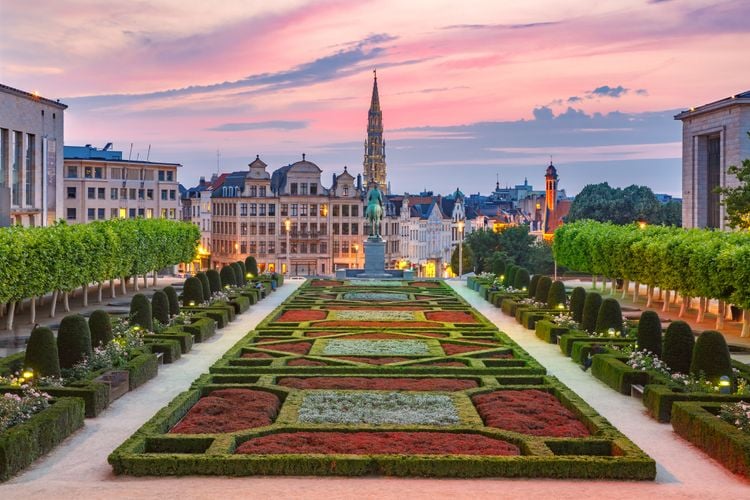Attracting thousands of visitors every year, the Manneken Pis, literally little boy who pees in Brussels, is a direct witness to Belgian folklore. A small bronze statue just 55.5 centimetres high (61 centimetres with its base), it sits proudly in the heart of the city, just a stone's throw from the Grand-Place. The little boy who pees is ironically one of Belgium's most famous and popular monuments. The statue in place is a copy of the original, which is carefully preserved in the Brussels City Museum, just 400 metres away. So emblematic and yet so ridiculously small, the little boy who pees is the very embodiment of Brussels humour, "la zwanze".
The adjectives "wacky", "cheeky" and "offbeat" best describe Belgian humour. A character trait appreciated by foreigners, Belgians, and especially the people of Brussels, are outspoken in their self-deprecating humour. So when tourists flock to one of the country's most visited monuments and come face to face with a 55-centimetre statue of a little boy taking a pee, they are often taken aback. It may sound like a Belgian joke, but what could be more Brussels than Manneken Pis? This irreverent little boy hides in the heart of the old town. Robbed, damaged and restored, the statuette that is the pride of the country has been in place for several centuries. Many legends circulate about it, each adding a layer of mystery and interest to this iconic monument that is unique in the world.

Where to stay close to the Grand-Place in Brussels
⭐ LATROUPE Grand Place Hostel
 Brussels
Brussels
LATROUPE Grand Place Hostel
Ideally located in the centre of Brussels, the LATROUPE Grand Place Hostel offers a buffet breakfast and free Wi-Fi in all its rooms.
Profile view of the Manneken Pis in Brussels, Belgium.
- © Artography / Shutterstockthe story of the little boy who pees
The earliest mention of Manneken Pis dates back to 1451. An administrative text describes the statue. However, this text was confused with another that referred to the statue as "the fountain of little Julien". In fact, the Manneken Pis is often nicknamed "the little Julien", albeit wrongly. From its earliest days, the fountain played an important role in the distribution of drinking water. It was placed along the rue du Chêne and stood on a column that poured its water into a basin below. The only representation of this statue can be found in a 1615 painting by Denis Van Alsloot, a Belgian painter. There are several theories as to the origin of Manneken Pis, but the most popular legend has it that a little boy saved the city by stopping a spring of water that threatened to destroy the fortifications of Brussels by urinating on the sparks of a fire.
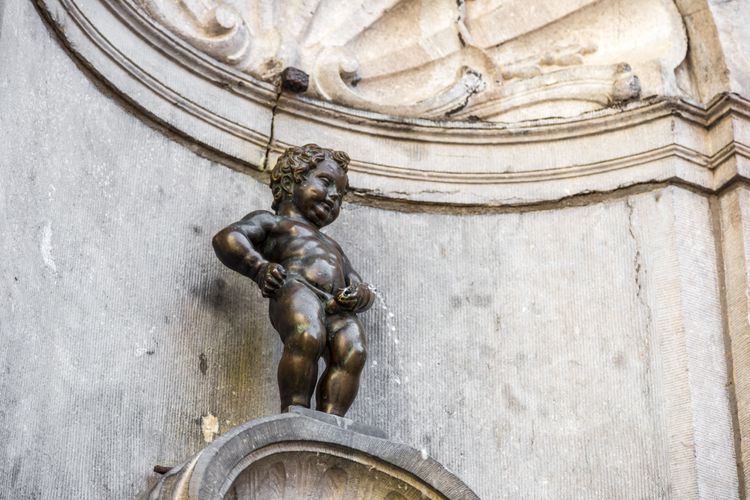
Close-up view of Manneken Pis, the statue that symbolizes the city of Brussels, Belgium.
- © Sergii Figurnyi / ShutterstockIn 1619, a new bronze version was commissioned and produced by the sculptor Jérôme Duquesnoy l'Ancien. It was installed in 1620, at the same time as the column and water basins were renovated. The fountain was no longer on the public highway, but protected in a recess in the corner of Rue du Chêne and Rue de l'Étuve. In 1770, the statuette was integrated into a rocaille décor taken from various Brussels fountains. Now housed in a sort of case, it gave an even smaller impression. In 1855, the fountain was protected by a gate to prevent access to the water, since the City of Brussels had made it possible to distribute drinking water to people's homes.
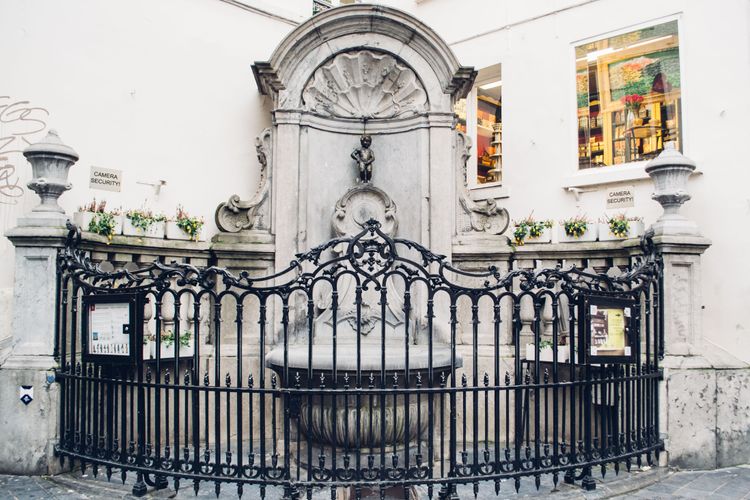
Manneken pis , the emblematic statue of Brussels, Belgium.
- © Alina Zamogilnykh / ShutterstockThe coveted and damaged statue
Over the centuries, Manneken Pis has been damaged and stolen on several occasions, but it has also been restored and protected by the people of Brussels. In 1695, however, it was spared the French bombardments that assailed the city. A text was then written in honour of Manneken Pis, stating that it had become "an object of glory appreciated by all and renowned throughout the world". And so, for the first time, it became the symbol of the Belgians, with all its irreverent and sarcastic humour. It is said that after the bombings, the city of Brussels placed an inscription from the Bible above its head: "The Lord raised me on a pedestal of stone, and now I will raise my head above my enemies". Since then, Manneken Pis has become a symbol of Brussels' identity. It embodies the independent and slightly provocative spirit of the city, and is often seen as a symbol ofindividuality and freedom.
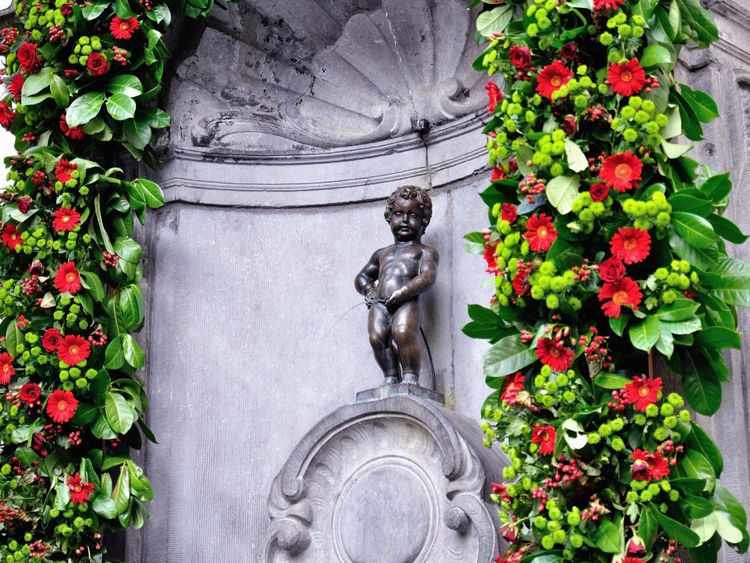
The Manneken Pis statue adorned with flowers in spring, Brussels, Belgium.
- © Hit1912 / ShutterstockThe statue has been stolen or attempted to be stolen several times over the centuries. But it was always found. In 1965, it was broken and ripped off, leaving only its feet on its base. For 1 year the statuette was nowhere to be found. Then, in 1966, the Antwerp magazine De Post received an anonymous call telling them that Manneken Pis was in the Charleroi canal. Divers did indeed find it at the bottom of the canal. Restored, the statuette is now housed in the city's museum, located in the heart of the King's House just a stone's throw away. So you're looking at a replica.
Manneken Pis is also known for its many outfits, which are often decorated for national holidays and special events. Some of the most famous outfits include a military outfit, a diplomat's outfit and a Christmas outfit. Finally, did you know that Manneken Pis was not the only small bronze statue in the city. It is also associated with Jeanneke Pis, which represents a little girl urinating. A feminine and much more modern version, it can be found in the impasse de la fidélité in Brussels. An extremely well-known street in the capital, where beer flows freely in the bars. Zinneke, a bronze dog, can also be found in Brussels, while a similar statue called Het Zinneke, representing a dog urinating in the city.
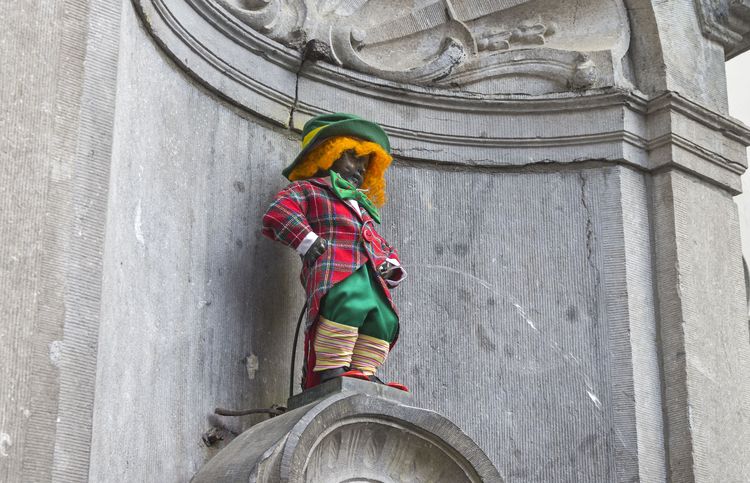
Manneken Pis in costume, Brussels, Belgium.
- © Sergey Rybin / Shutterstock